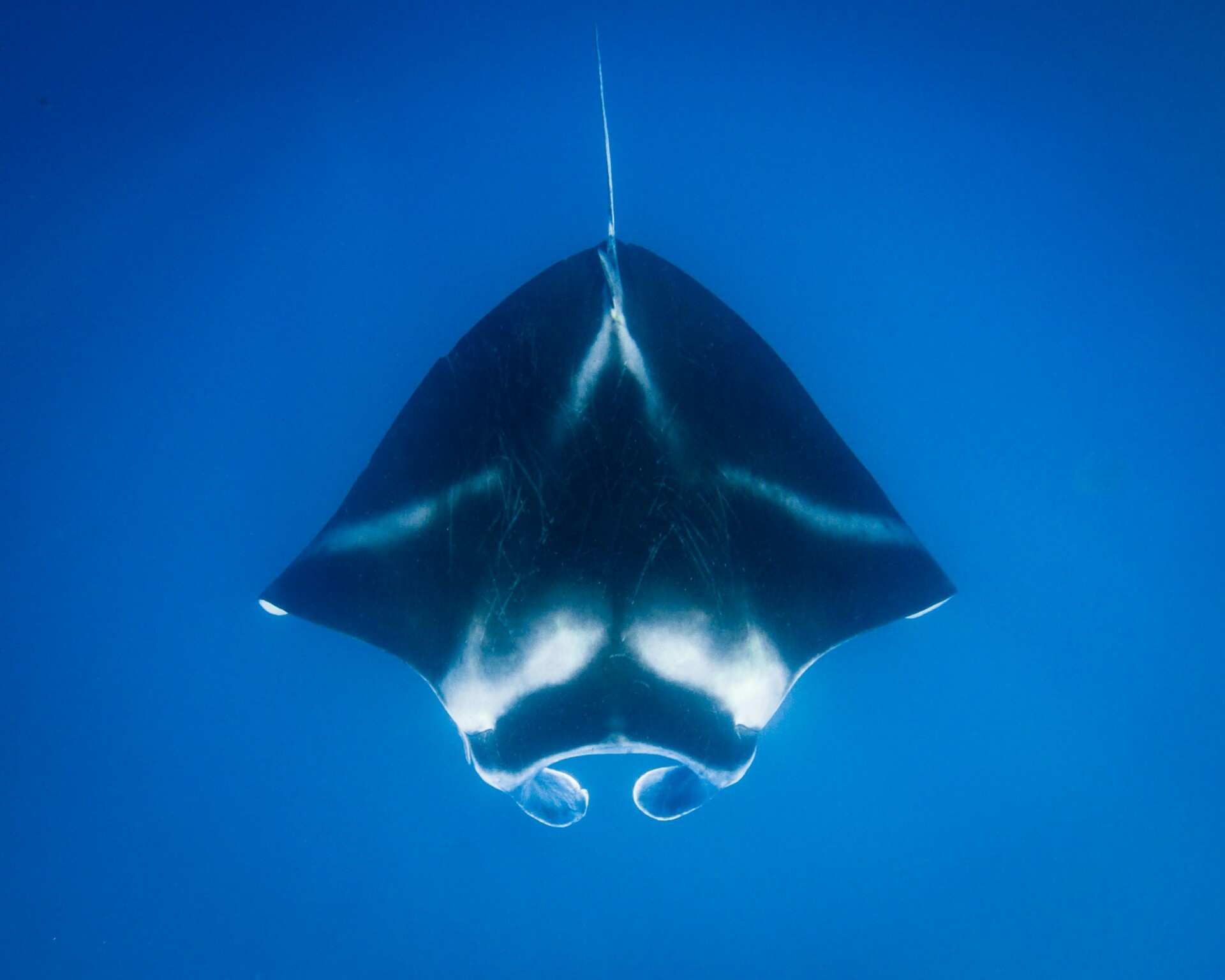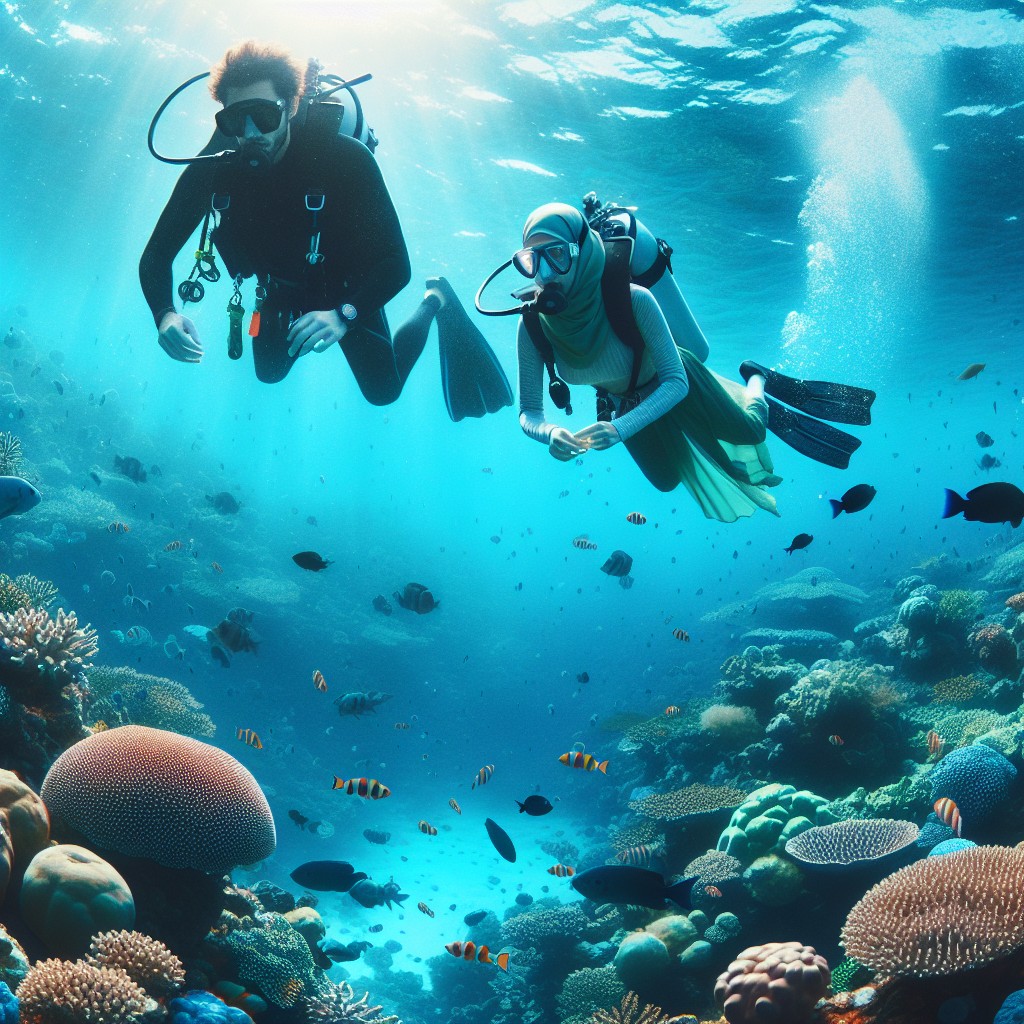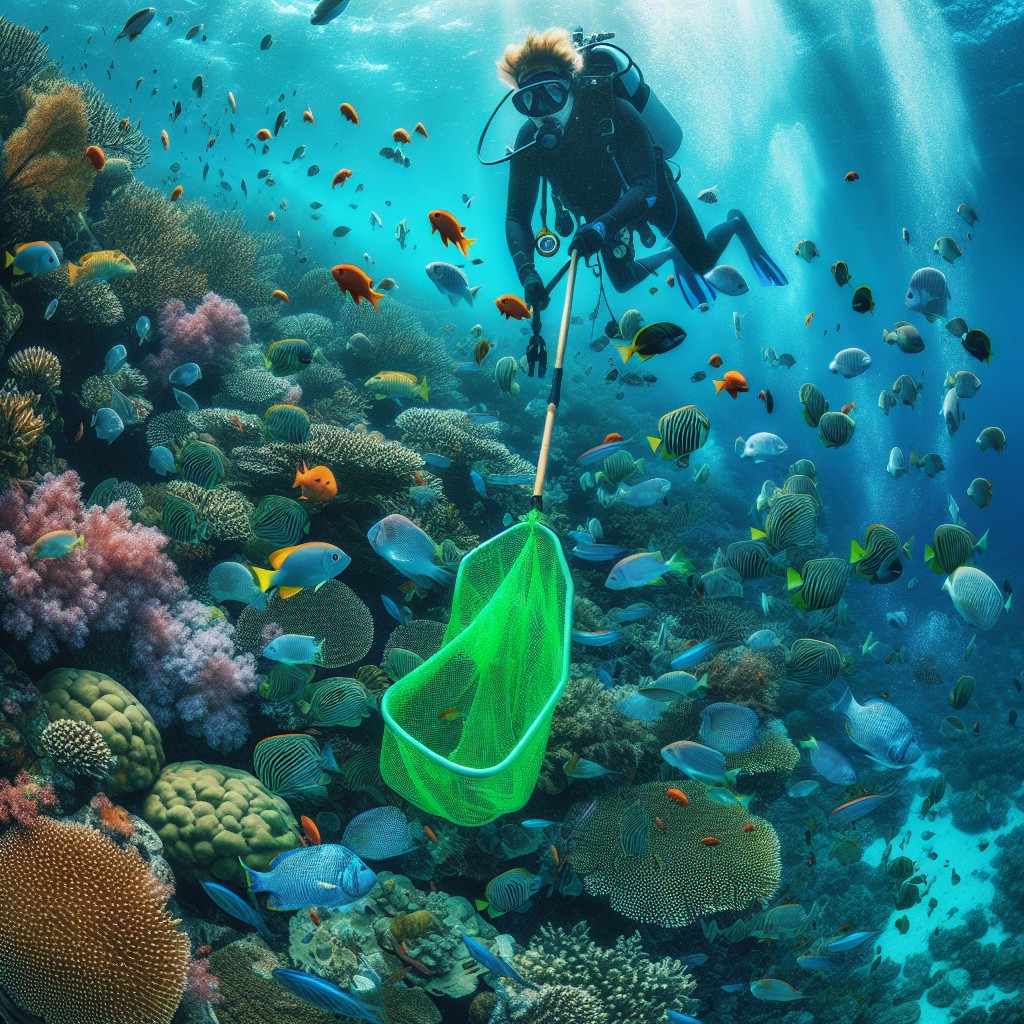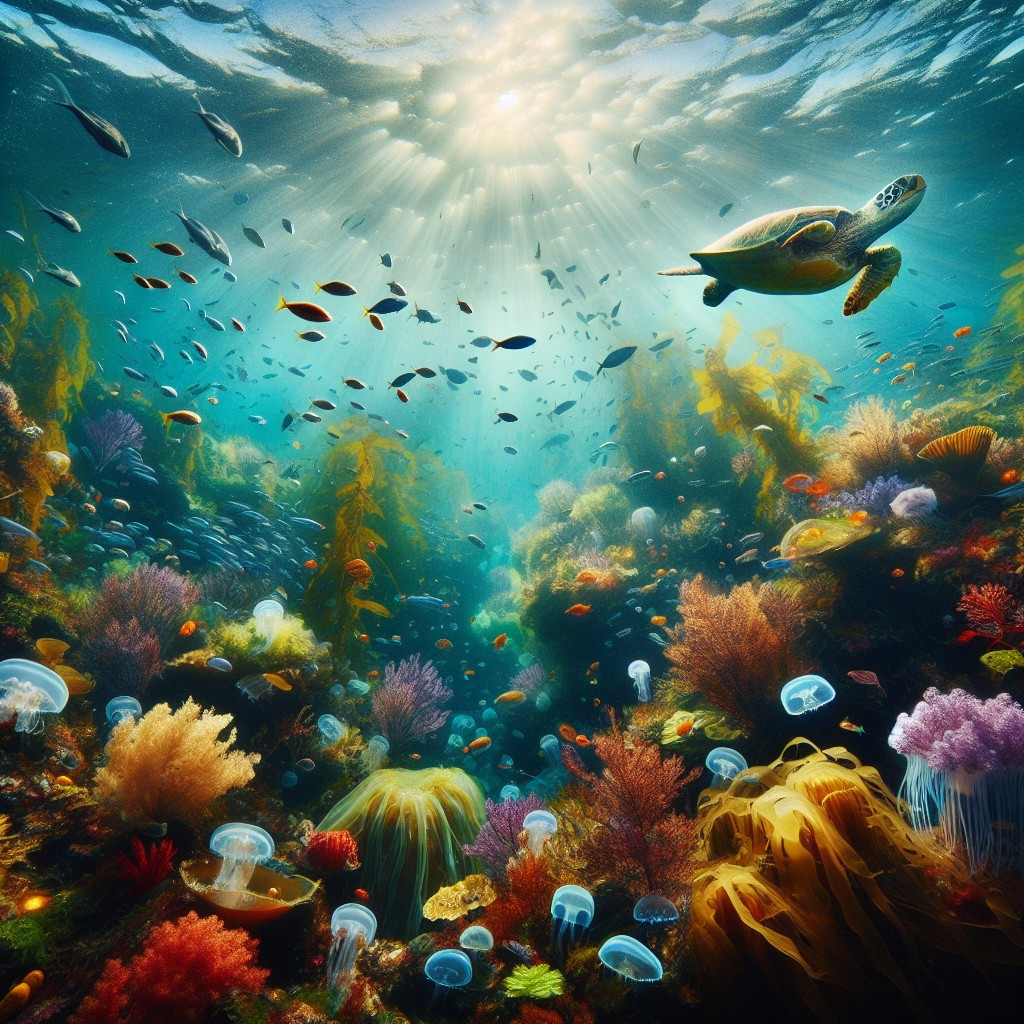Diving with Manta Rays in Japan
Diving with manta rays is a breathtaking experience that attracts divers from around the globe to the beautiful waters of Japan. The rich marine biodiversity and unique dive sites make it an ideal location for these adventures.
Best Diving Locations
Some of the top sites for encountering manta rays in Japan include Ishigaki Island and Yonaguni Island. Both locations offer exceptional opportunities for divers to see these magnificent creatures in their natural habitat.
| Location | Highlights |
|---|---|
| Ishigaki Island | Renowned for manta ray encounters, vibrant coral reefs |
| Yonaguni Island | Known for hammerhead shark sightings, intriguing underwater ruins |
| Kouri Island | Home to the USS Emmons wreck, great for wreck diving |
| Osezaki Bay | Close to Tokyo, popular for diverse marine life, including eels and sea bass |
For a more comprehensive overview of top destinations, refer to our article on the best dive sites in Japan.
Diving Season Variety
Japan’s diving season is vibrant year-round, with different regions showcasing unique marine life depending on the time of year. For instance, Hokkaido is known for its crustaceans, while Ishigaki Island is famous for its manta rays.
| Season | Best Locations | Marine Life Highlights |
|---|---|---|
| Winter | Hokkaido | Crustaceans, cold-water species |
| Spring | Osezaki Bay, Ishigaki | Eels, sea bass, beginning to see manta rays |
| Summer | Ishigaki Island, Okinawa | Manta rays, abundant coral species |
| Autumn | Yonaguni Island | Hammerhead sharks, various fish species |
For more insights on the best time to plan a trip, check our article on the best time of year for scuba diving in Japan. Exploring these varying diving conditions can enhance a diver’s experience and appreciation of Japan’s rich underwater world, which is also home to a variety of marine life throughout the seasons.
Dive Locations in Japan
Japan offers a plethora of dive locations catering to seasoned divers and beginners alike. Each region provides unique underwater adventures and opportunities to encounter diverse marine life.
Unique Diving Adventures
Diving in Japan encompasses a variety of thrilling experiences. Here are some notable locations that stand out:
| Location | Unique Features |
|---|---|
| Ishigaki Island | Renowned for manta ray encounters, especially during the summer months. |
| Osezaki Bay | Offers sightings of eels and sea bass, particularly enjoyable for macro photography enthusiasts. |
| Hokkaido | Home to unique crustacean species and ice diving opportunities during winter. |
| Yonaguni | Famous for the underwater ruins, an archaeological site that ignites curiosity. |
For those interested in the underwater ruins, learn more in our article on the underwater ruins of Yonaguni.
Certification Opportunities
Japan is an excellent place to gain diving experience and work towards acquiring Professional Association of Diving Instructors (PADI) certifications. There are ample opportunities for certification courses available in multiple languages across the country (Japan Travel). Whether diving for leisure or aspiring to teach others, regions like Okinawa and Hokkaido frequently host training programs for various certification levels.
Different Certification Levels Available:
| Certification Level | Description |
|---|---|
| Open Water Diver | First level, allowing the holder to dive independently with a buddy. |
| Advanced Open Water Diver | Involves completing five dives, expanding skills and knowledge. |
| Rescue Diver | Focuses on safety, giving divers the skills to assist in emergencies. |
| Divemaster | Leadership level, enabling individuals to guide and supervise recreational dive activities. |
Marine Species Encounter
Encountering diverse marine life is a primary reason many divers choose Japan as their diving destination. The country’s varying ecosystems allow for sightings of numerous species, making each dive a distinctive experience.
- Ishigaki Island is one of the best spots for manta rays, which visit cleaning stations in the area.
- In Osezaki Bay, divers can encounter eels, sea bass, and a rich variety of soft corals.
- Hokkaido offers unique encounters with crustaceans, especially during colder months.
For more information on the diverse underwater life, check out our article on marine life in Japan waters. The unique marine biodiversity, combined with excellent diving conditions found throughout the year, makes Japan a standout destination for those looking to immerse themselves in the underwater world.
Manta Ray Facts
Exploring the intriguing world of manta rays can enhance the experience of those interested in diving with manta rays in Japan. This section covers key characteristics, diet and conservation status, and habitat of these majestic creatures.
Manta Ray Characteristics
Manta rays are known for their impressive size and distinct physical features. The wingspan of giant oceanic manta rays can reach up to 22 feet, with documented measurements of individuals around 30 feet (Manta Ray Advocates). Adult reef manta females typically measure between 12 to 14 feet from wingtip to wingtip.
| Manta Ray Type | Average Wingspan |
|---|---|
| Giant Oceanic Manta Ray | Up to 22 feet |
| Adult Reef Manta Ray | 12 – 14 feet |
Manta rays have large pectoral fins and a flattened body that assists in gliding effortlessly through the water. These sleek features not only contribute to their gracefulness but also their ability to navigate their aquatic environment efficiently.
Manta Ray Diet and Conservation Status
Manta rays are filter feeders, primarily consuming plankton and other small marine organisms. They can consume approximately 12% of their body weight in plankton each week, with their diet including copepods, mysid shrimp, crab larvae, mollusk larvae, and fish eggs (Manta Ray Advocates).
In terms of conservation, the giant oceanic manta ray is classified as “endangered” on the IUCN Red List since December 2020, while the reef manta ray is classified as “vulnerable with decreasing numbers” (Manta Ray Advocates). Protecting these species is crucial for maintaining marine biodiversity.
Manta Ray Habitat Worldwide
Manta rays inhabit warm, tropical, and subtropical waters around the world, with a presence in a variety of locations. Great places to observe them include Indonesia, the Philippines, the Maldives, Mozambique, Costa Rica, Mexico, Ecuador, Australia, Micronesia, Japan, Fiji, and the Solomon Islands (Manta Ray Advocates).
Their wide distribution emphasizes the importance of global conservation efforts, as these magnificent creatures are vulnerable to habitat degradation and fishing practices. Scuba divers in Japan can enjoy encounters with these rays in their natural habitats, providing a chance to contribute to awareness and conservation.
For those interested in diving into more marine life, check out our article on marine life in Japan waters.
Skin Diving in Japan
Skin diving, often referred to as “bare diving,” is an exciting marine activity that allows divers to explore the underwater world without the use of scuba diving equipment. This practice offers a more relaxed experience than scuba diving while remaining more engaging than traditional snorkelling.
Skin Diving Essentials
Before embarking on a skin diving adventure in Japan, divers must equip themselves with essential gear. Unlike scuba diving, skin diving does not require a diving license (C card), making it accessible to many enthusiasts. The primary tools needed for skin diving include:
| Essential Equipment | Description |
|---|---|
| Snorkel | A breathing tube that allows the diver to breathe while their face is submerged. |
| Mask | Provides visibility underwater by allowing the diver to see clearly without distortion. |
| Fins | Help propel the diver through the water and enhance swimming efficiency. |
Depending on the environmental conditions, additional gear may be needed, such as weights to help with sinking and wetsuits to protect against cooler temperatures (Activity Japan).
Techniques and Tips
For effective skin diving, employing proper techniques is crucial. Here are some helpful tips:
-
Ear Pressure Adjustment: A common challenge for divers is adjusting to air pressure in their ears. It’s essential to equalise pressure by pinching the nose and gently exhaling.
-
Jackknife Technique: This technique facilitates a smooth entry into the water. Divers should bend at the hips while keeping their legs straight and jump forward.
-
Dolphin Kick: This efficient kick mimics the natural motion of dolphins, propelling the diver forward and conserving energy.
-
Breath-Holding Practice: Divers should learn to hold their breath calmly while swimming or diving underwater. This skill enhances the overall experience and extends underwater exploration time (Activity Japan).
For more information on planning an unforgettable dive holiday in Japan, including diving locations and conditions, visit our articles on introduction to scuba diving in japan and best dive sites in japan. Whether you choose skin diving or diving with manta rays in Japan, exploring these remarkable waters will yield unforgettable experiences.
Diving in Ishigaki, Okinawa
Ishigaki Island, part of Okinawa, is a prime location for divers seeking to experience the majestic presence of manta rays. This section will discuss the available manta ray experiences, environmental considerations, and English-speaking dive shops in the area.
Manta Ray Experiences
Diving with manta rays in Japan is a highlight for many scuba divers, especially in Ishigaki. One renowned site for encountering these magnificent creatures is Kabira Manta City, which is noted for having mantas frequenting its cleaning stations. Here, divers can observe mantas getting cleaned by smaller fish, creating a breathtaking marine spectacle.
Additionally, visitors can partake in full-day snorkel tours that not only focus on manta rays but also include opportunities to spot sea turtles and other marine life. These tours typically cover various coral points, including the famed Manta Point (Rakuten Travel Experiences).
| Experience | Highlights | Duration |
|---|---|---|
| Full-Day Tour | Snorkelling with mantas and sea turtles | Approximately 8 hours |
| Dive Tour | Opportunity for diving with mantas | Varies (generally 1-2 dives) |
Environmental Considerations
While the opportunity to engage with manta rays is thrilling, it also raises concerns regarding environmental sustainability. Reports indicate that the coral reefs in Ishigaki face significant challenges, with only about 1% of the largest coral reef being healthy. Issues such as coral bleaching and dying zones are exacerbated by human activity, including touching or holding onto the coral during dives, which can lead to irreversible damage (Dive O’Clock).
Divers are encouraged to engage in eco-friendly diving in Japan practices, such as avoiding reef touching and maintaining a respectful distance from marine species. Responsible diving not only preserves the local ecosystem but also ensures future generations can enjoy the same experiences.
English-Speaking Dive Shops
For international divers, finding English-speaking dive shops is essential for a seamless diving experience. Ishigaki offers various dive shops catering to English-speaking customers. These shops typically provide a range of services, including dive equipment rental, guided dives, and certification courses tailored for all experience levels.
| Dive Shop Name | Services Offered | Languages Spoken |
|---|---|---|
| XYZ Diving | Guided dives, rentals, certifications | English, Japanese |
| Ishigaki Dive Club | Snorkeling tours, dive packages | English, Japanese |
| Okinawa Adventure Club | Full-day tours, gear rental | English, Japanese |
Choosing a reputable dive shop not only enhances the diving experience but also ensures safety and professionalism. For more information on the best dive sites, check out our article on best dive sites in Japan. Ishigaki is indeed a breathtaking destination for anyone looking to immerse themselves in the beauty of marine life while diving alongside manta rays.
Dive Packages in Hokkaido, Japan
Hokkaido offers unique diving experiences that cater to scuba divers seeking adventure in Japan’s pristine waters. From diving among ice floes to exploring caldera lakes, Hokkaido’s dive packages provide an unforgettable journey into the underwater world.
Hokkaido Diving Highlights
One of the standout features of diving in Hokkaido is the opportunity to participate in the 1Day (2Dives) Hokkaido World Heritage Shiretoko Drift Ice Diving Package Plan. This esteemed package includes:
- Diving Activities: Two dives in the breathtaking environment of Shiretoko Peninsula during winter (February).
- Full Gear Rental: Essential cold-water diving equipment is provided.
- Transportation: Private transport to and from dive sites.
- Personal Guide: A private underwater guide ensures a safe and enriching diving experience.
Requirements for this package include possessing an Open Water scuba license, having at least 20 drysuit dive experiences, and bringing personal drysuit gear. For more details, visit JAL’s diving package page.
| Package Feature | Details |
|---|---|
| Number of Dives | 2 |
| Diving Environment | Drift Ice Diving |
| Location | Shiretoko Peninsula |
| Diving Period | February |
| Requirements | Open Water scuba license, 20 drysuit dives |
Shiretoko Peninsula Experience
The Shiretoko Peninsula is known for its tranquil diving conditions, especially between January and March when the ice breaks in the Sea of Okhotsk. Divers can enjoy the unique experience of diving amongst drifting ice floes, which creates a scenic backdrop.
This area boasts clear waters and is home to a variety of cold-water marine life, including sea anemones and diverse fish species. The calm atmosphere allows divers to witness the elegance of massive ice blocks floating above, making for an unforgettable visual experience. For more on diving spots, check our article on the best dive sites in Japan.
Lake Shikotsu Exploration
Another remarkable dive location in Hokkaido is Lake Shikotsu, a caldera lake featuring exceptionally clear waters. The lake’s unique environment supports a thriving ecosystem, including salmon and trout, along with noteworthy natural monuments.
What makes Lake Shikotsu special is its ability to remain unfrozen despite Hokkaido’s harsh winters, permitting year-round scuba diving opportunities. Divers are also treated to sights of the Chitose Baikamo, a water flower that blooms during the summer months, adding to the lake’s charm. For those interested in diving in more diverse locations, consider reading about diving in Okinawa.
| Lake Feature | Description |
|---|---|
| Location | Hokkaido |
| Type | Caldera Lake |
| Marine Life | Salmon, trout |
| Visibility | Excellent clarity |
| Seasonal Highlights | Water flower bloom in summer |
Hokkaido’s dive packages offer an appealing mix of natural splendor and engaging underwater life. Divers seeking to experience diving with manta rays in Japan will find these packages a compelling addition to their adventure itinerary. For an overview of diving conditions in Japan, consult our article on diving conditions in japan.



